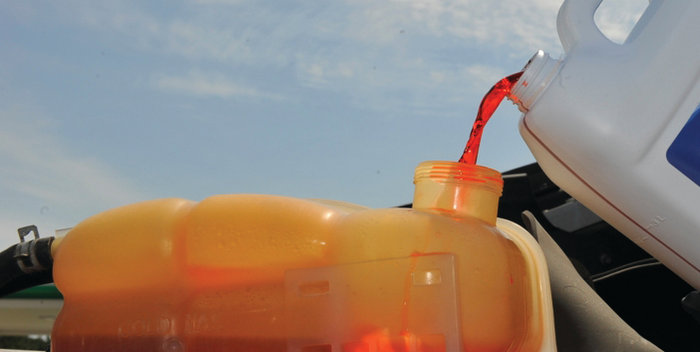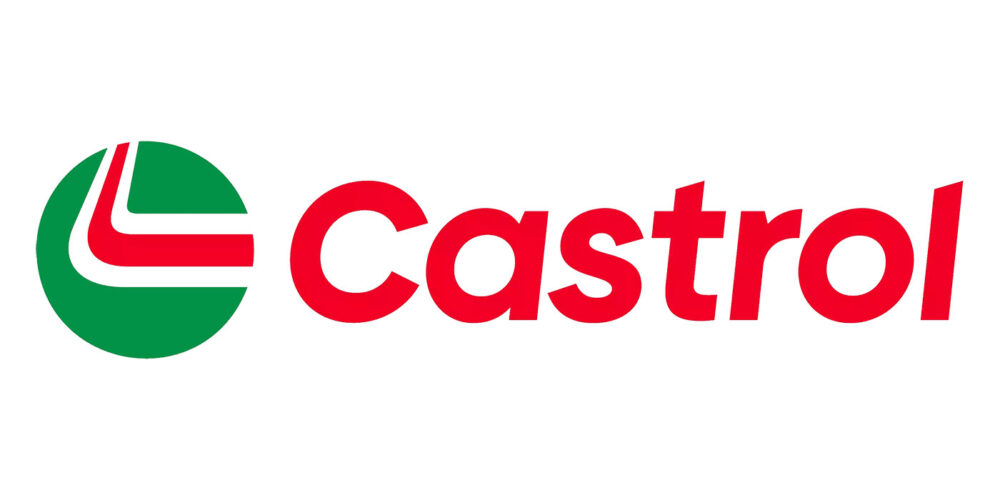Today’s modern heavy-duty engines are being designed with a greater amount of aluminum components, including radiators, heater cores, oil coolers, charge air coolers, water distribution housings, piping and control valves. “Due to the higher aluminum content engines, one phenomenon that is being observed in the industry is that nitrite containing coolants may react with aluminum components causing unwanted reactions that can damage aluminum components,” said Fred Alverson, principal engineer, coolants, Shell Global Solutions. “Therefore, many heavy-duty OEMs worldwide have established specifications for ELC nitrite-free coolants and are encouraging the use of ELC nitrite-free coolants in the industry.”
This introduces the complication of transition from NOAT to OAT coolant. “The NOAT is relying on nitrite or nitrite/molybdate to provide cavitation protection. The ASTM standard, D6210 stipulates the level of nitrite or nitrite/molybdate that needs to be in a formula to prevent cavitation,” said Mike Tourville, marketing director for Evans Cooling. “When switching to an OAT, [fleet managers] need to be sure the coolant has demonstrated liner protection in the John Deere Cavitation test since they are using organic acids to do the job and there is no specification for what acid or level will provide that.”
Of course, the engine manufacturer’s design will be the biggest motivating factor for making the coolant switch. The engine manufacturer would have developed and tested the coolant technology type to ensure it was compatible with the cooling system components. Should one switch to another technology type?
Colin Dilley, Ph.D., vice president of technology for Prestone Products Corp. answers: “There are sound technical reasons why some coolants contain nitrite and others do not due to engine and cooling system design and materials of constructions. When one moves from one technology to another there may be unknown component failures and PM issues that will have to be addressed resulting from the change.”
Each OEM would be the best source for these potential concerns and may be able and willing to provide you with this information.
In addition…
For fleet managers who are curious about coolant additives, Darry Stuart of DWS Fleet Management Services, an independent transportation and fleet management business, offers this advice: “For the most part, it’s simple—pick one, use one.”
When ELC coolants were first introduced, it was the consensus of the industry that nitrite or the combination of nitrite and molybdate was required to ensure satisfactory protection of wet sleeve cylinder liners from pitting corrosion.
“Since nitrite may deplete with service, the major coolant suppliers of ELC coolants recommended the use of an extender at 300,000 miles to replenish the nitrite and tolyltriazole [copper / brass corrosion inhibitor] to allow use of the coolant out to 600,000 miles or longer,” Shell’s Alverson said. “More recent experience has shown that the OAT corrosion inhibitors will provide satisfactory cavitation protection of wet sleeve cylinder liners without the use of nitrite or nitrite/molybdate.”
In addition to extenders, there are a number of supplemental coolant additive (SCA) that promise improved performance. Whenever you consider introducing an additive into your coolant, you have to be sure it’s appropriate for the coolant you are currently using. Key to that understanding includes which extender is required, how to monitor the key inhibitor levels, choice of liquid additive or pre-charged filter, and the recommended addition or filter change out times.
There are SCA and extender products designed for use with conventional, hybrid and ELC technologies that come in a variety of forms, as liquids to be added directly to the cooling systems or solids located in pre-charged filters (i.e. time released additives). Sizes range from ½ pint to a 55-gal. drum. Care must been taken when selecting which option to use and developing a proper cooling system maintenance program to ensure that the cooling system is not over charged which can lead to problems.
In a cooling system that is tight, and not experiencing excessive coolant leakage, the use of extenders is more straight forward. The fleet manager must know what type of ELC he or she is using and select the corresponding extender.
“There are unique extenders for nitrite and nitrite-free ELCs. Addition of these extenders to the cooling system or the replacements of the inhibited filter is designed such that correct inhibitor levels are maintained as they depleted,” Prestone’sDilley said. “The addition and/or replacement information/recommendations are available from either the engine manufacturer or extender manufacturer.”
Dilley went on to explain that in a fleet that may be experiencing high cooling system leakage, the use of extenders versus just topping off with the proper coolant during vehicle operation needs to be evaluated. It has been reported that in some new heavy-duty vehicles, it is not unusual for a 10-gal. cooling system to lose 1 to 5 gal. of coolant per year. This is equates to having to add 10 to 50 gal. of “top-off” coolant to the vehicle in the span of approximately 10 years of service, which is potentially the same volume of coolant that would be required to replace or refill the coolant system up to five times. Additionally, older vehicles can lose as much as 10%, or 1 gal., of coolant per month; which is equivalent to having to replace the coolant entirely at a ate of once per year. Again, the key here is to monitor and know the levels of the key inhibitors and to supplement as necessary.














